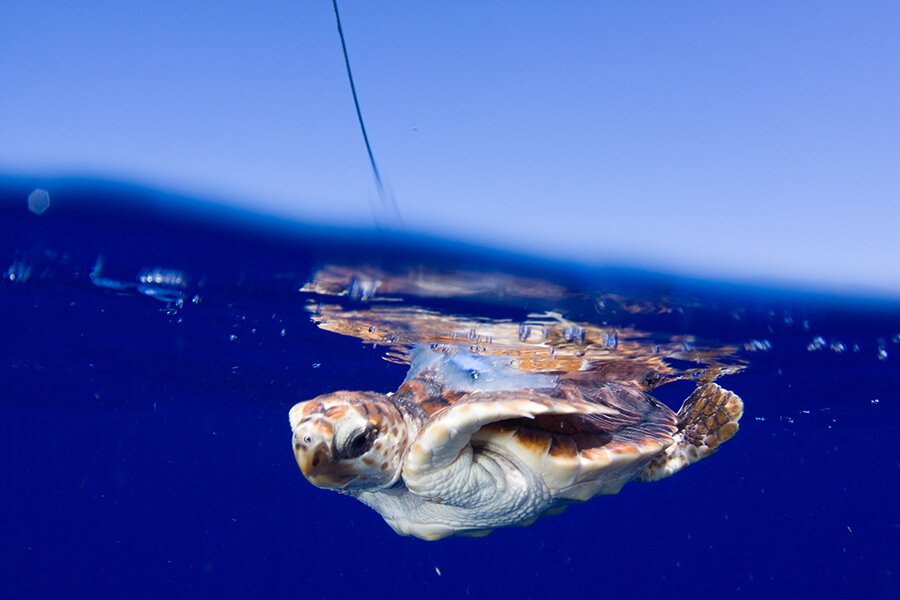How a manicurist helped solve a sea-turtle mystery
Loading...
The shell of a loggerhead turtle is basically a giant fingernail.
Or at least that's a useful way to look at it when you're trying to come up with a way to attach a solar-powered satellite tag to one.
A team led by University of Central Florida biologist Kate Mansfield was developing the tags to get a glimpse of the turtles' "lost years," the interval that begins when the hatchlings, just over an inch long, disappear into the seas off Florida’s east coast and when they return, at almost 18 inches long, to shallow waters near the shore.
The plan was to equip 17 captive loggerhead turtles with the tiny tags and then release them into the ocean. But the scientists didn't know how to get the tags to safely stick to the shells. That's where the manicurist came in.
Turtle shells, it turns out, are made of keratin, the very same substance that makes up human hair and fingernails.
Florida Atlantic University biologist Jeanette Wyneken, a member of Mansfield's team, got the idea of checking in with her husband's manicurist. Her husband, professionally a marine biologist, plays classical guitar, an activity that often requires careful shaping and protection of the fingernails.
"He has very delicate nails," Wyneken says of her husband. "So his manicurist uses a certain kind of acrylic nails that keep them sort of intact."
Wyneken checked with the manicurist and reasoned that non-toxic manicure acrylic could be safely applied to a very small part of the turtles' shells, and that it would stay put. The acrylic "basically helps to stabilize the shell," Wyneken says.
Biologists had earlier believed that turtles went around the Atlantic in large circles by entraining themselves with the currents associated with the North Atlantic subtropical gyre. "Imagine following a doughnut around a circle," Dr. Manfield says.
But after tracking the turtles for 27 to 220 days, scientists have found that after hatching, some of these small, fast-growing, migratory species apparently move to different habitats, such as the Sargasso Sea, which is rich in floating Sargassum, a type of seaweed.
Scientists suggest it is possible that turtles take the detour toward the Sargasso Sea in search of warmer habitats, for foraging purposes, or simply to escape from predators.
According to the findings of the study, published in a paper titled "First satellite tracks of neonate sea turtles redefine the ‘lost years’ oceanic niche" in the journal Proceedings of the Royal Society B. the turtles stayed away from Continental Shelf waters to escape predators and they mostly stayed at the sea surface for a thermal benefit.
“This makes sense because the turtles are cold blooded animals. By remaining at the sea surface, and by associating with Sargassum habitat, turtles gain a thermal refuge of sorts that may help enhance growth and feeding rates, among other physiological benefits.”
Earlier knowledge about sea turtles, a globally endangered species, came mostly from rare opportunistic sightings offshore, or from laboratory studies.
“With real observations of turtles in their natural environment, we are able to examine and reevaluate existing hypotheses about the turtles’ early life history. This knowledge may help managers provide better protection for these threatened and endangered species," said Mansfield in a press release.






